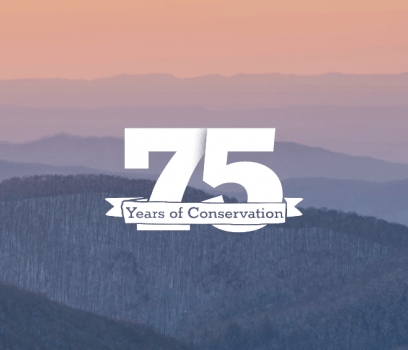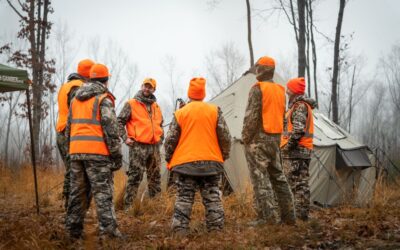Conservation is no single approach or method. It’s a collaborative effort that often requires different perspectives to come together and compromise.
This has been proven to us time and time again over our 75-year history.
That’s because conservation is almost never simple. Each time there is a new threat or challenge, there are many moving parts to consider. This is just as true today as it was in the 1980s on Coldspring Mountain in Greene County.
Check out this story from our past when Tennessee Wildlife Federation stepped in to solve a dispute on Coldspring Mountain—ultimately safeguarding its wilderness.
Now, Coldspring Mountain stands as a monument to compromise.
Black bears roam its secluded hollows for food, hikers enjoy weekend jaunts. Local residents visit the mountain’s summit. And nature is slowly healing over abuse’s wounds.
Coldspring Mountain Healing
This story originally appeared in the Johnson City Press on August 21, 1988 and was written by Alan Polk.
Smoke from a nearby forest fire filled Horse Cove Friday, reminding some people of the flames of controversy which once raged out of control on Greene County’s Coldspring Mountain.
As the Jeep inched up the four wheel-drive road, the smoke settled low in the valley and mountain peaks came into view. All along the road, large oak maple and beech trees seemed to cling to steep mountain soil, some twisted and dead.
At the mountain summit was evidence of past wars between residents wanting the mountain open to vehicles and those for protecting the mountain. A log was pulled from an earthen vehicle barrier, and names of recent visitors adorned rocks.
But even with the reminders of recent problems in clear view, U.S. Forest Service officials say the respect given the area now is much better than it once experienced.
The Coldspring Mountain controversy raged in the early 1980s after the Forest Service tried to close one of the roads to off-road vehicles (ORV) and restrict local residents’ driving along the mountain’s unique grassy balds.
As soon as the closure became public, people armed with four wheel drives began pulling gates out of the ground and threatening to do as they wished with the mountain.
The residents’ opposition combined with congressional mandates to protect the area put the U.S. Forest Service square in the middle. After Forest Service officials tried to resolve the issue, [Tennessee Wildlife Federation] jumped into the issue’s hot cinders to bring about a compromise.
Surprisingly, [the Federation’s] move worked.
As a result of more than a year of meetings, each group got a piece of the Coldspring Mountain pie and agreements to work as a group to resolve the issue.
Now ORV riders drive within 100 yards of the mountain summit, Appalachian Trail hikers walk among scenic vistas, wildlife populations slowly improve and residents pick berries and visit graves of family members.
The [Federation] should be commended for its efforts. Heaven knows it’s almost impossible to get hunters, ORV riders, Appalachian Trail hikers, fishermen and protectionists in one room for a meeting, much less get them to agree.
“This shows if every interest will sit down and work together we can solve any issue on the Cherokee,” said Mark Benko, [Federation] vice president for East Tennessee. Benko joined the original group, which worked to solve the problem, and U.S. Forest Service officials Friday for a tour of the mountain.
Benko, the ramrod of the agreement, is now taking the fight to resolve natural-resource issues a step further.
“We want anyone interested in the future management of the Cherokee to have a chance to voice their opinions, if they wish,” he said as the group stopped to inspect the return of mountain oat grass to the high balds.
“With this working relationship between the [Federation] and the Cherokee now established, we can have input on plans as they are being made, instead of taking a negative stand after the decision is made.” Traces of abuse haunted the Coldspring Mountain tour. Trees killed by arsonists unhappy about the Forest Service decisions marred the scenic rock overlook.
“About 40 percent of the mountain has been burned,” said Bill Sweet, Ranger of Nolichucky Ranger District. “But now I feel we have a good plan for this mountain and one everyone seems to be able to live with.”
“Everyone didn’t get everything they wanted,” Benko said. “It was a compromise. But now it seems to have started working.”
The group continued, checking management practices being enacted by volunteers and government officials, and a hawk soared overhead as it searched for a quick meal.
Featured photo by Michael Kaal




